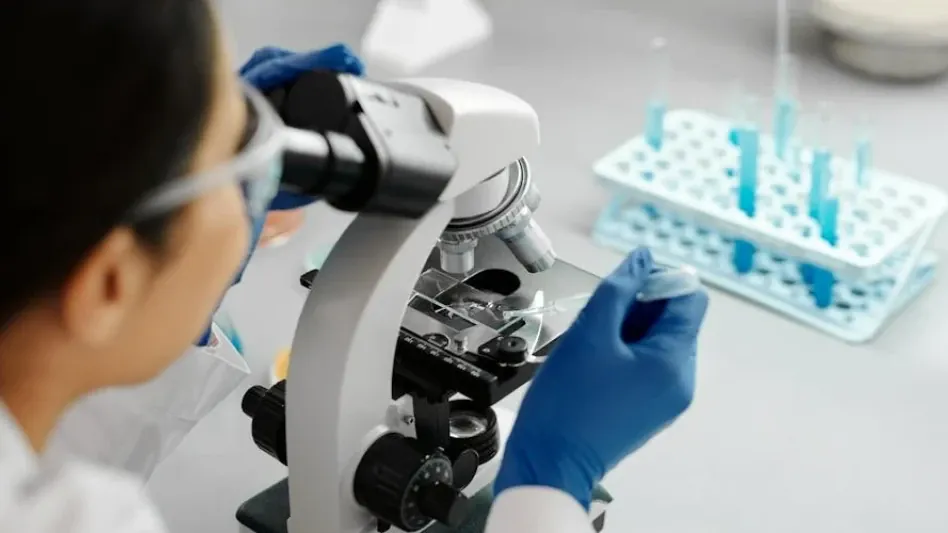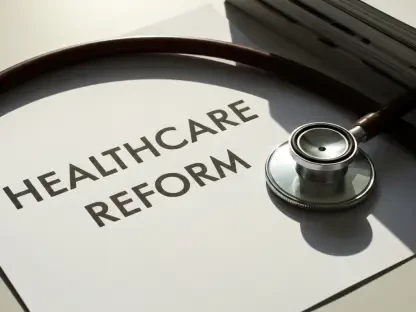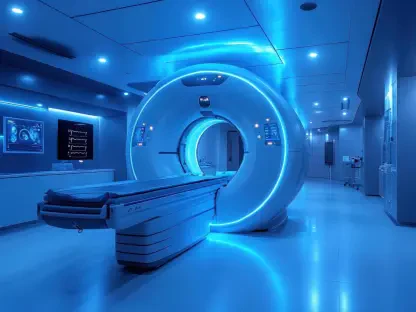The life sciences sector has seen significant shifts in recent years, particularly concerning the real estate market. The COVID-19 pandemic spurred a boom in the life sciences industry, leading to a surge in demand for laboratory spaces. However, post-pandemic, the market now faces challenges of oversupply and rising costs. Amidst these hurdles, converting decommissioned hospitals into lab spaces has emerged as a promising, cost-effective strategy.
The Post-Pandemic Life Sciences Market
Growth and Subsequent Cooling
During the COVID-19 pandemic, the life sciences sector experienced unprecedented growth driven by the urgent need for medical research and development. This surge in activity placed laboratory spaces in high demand, making it one of the most sought-after segments of the real estate market. However, as the pandemic waned and the immediate need for expansive research facilities diminished, the market cooled off significantly. The construction boom during the pandemic, especially in major life sciences hubs like Boston, San Diego, and San Francisco, led to an oversupply of lab spaces. Consequently, vacancy rates soared to record highs as many newly constructed properties remained unleased, leading to a significant market adjustment.
Challenges of Oversupply
The oversupply within the life sciences real estate market has resulted in a challenging environment for developers who are now struggling to fill vacant properties. This high vacancy rate, coupled with negative net absorption, has made it increasingly difficult for new buildings to secure tenants. According to CBRE, it may take several years for the market to fully adjust and balance the oversupply. This forecast implies a prolonged period of difficulty for developers, who are now tasked with finding innovative solutions to attract tenants and make use of the excess spacing efficiently. This situation has spurred a need for creative thinking and strategic planning to navigate the challenges posed by the current market conditions.
Construction Trends in Life Sciences Real Estate
Office-to-Lab Conversions
In the midst of the life sciences boom during the pandemic, converting vacant office spaces into laboratories became a popular trend. However, this approach has proven to be more complex and costly than initially anticipated. The specialized infrastructure required for lab spaces, including enhanced HVAC systems, power capacity, and plumbing, presents significant challenges. These technical specifications result in expensive construction projects, often exceeding initial budgets. The costs associated with life science projects have increased dramatically, with fit-out costs and prices for specialty equipment rising substantially compared to pre-pandemic levels. Additionally, tenant improvement allowances have seen a notable rise, further adding to the financial burden on developers attempting these conversions.
Rising Costs and Financial Strain
The financial strain on developers has been exacerbated by the rising costs of life science projects. The increased demand for specialized equipment and infrastructure has driven up prices, making it increasingly difficult for developers to stay within budget while meeting the precise requirements of lab spaces. Extensive renovations and upgrades to transform an office space into a fully functional laboratory add to the financial burden, necessitating significant investment in terms of both time and money. As developers seek to balance these financial challenges, alternative solutions that mitigate costs while fulfilling the needs of life science enterprises are becoming more appealing. This ongoing financial strain is prompting developers to explore more efficient and feasible strategies.
The Emergence of Hospital-to-Lab Conversions
Advantages of Hospital Infrastructure
In response to the rising costs and challenges of office-to-lab conversions, converting decommissioned hospitals into lab spaces for life science startups has emerged as a promising trend. Old hospitals possess several inherent advantages that make them ideal candidates for such conversions. These buildings already have critical infrastructure in place, such as HVAC systems, power capacity, and emergency facilities, which significantly reduces the need for extensive and costly renovations. Additionally, hospitals are often located in urban areas near talent pools and universities, making them attractive to life science companies seeking proximity to research institutions and skilled professionals. Consequently, these factors contribute to the overall cost-effectiveness and practicality of hospital-to-lab conversions.
Structural Challenges and Solutions
Despite the numerous advantages, hospital-to-lab conversions are not without their challenges. One major issue is the narrow layouts and room configurations typical of hospital buildings, which often require substantial reconfiguration to meet the needs of modern laboratory spaces. This involves the removal of walls and structural modifications to create open, flexible work areas. Furthermore, upgrading buildings to comply with current codes and standards is essential but can be complex and time-consuming. Yet, despite these hurdles, the cost savings from utilizing existing infrastructure often outweigh the challenges. By leveraging the foundational infrastructure already present in hospitals, developers can significantly reduce fit-out expenses, making hospital-to-lab conversions a viable and cost-effective solution for addressing the current market needs.
Case Study: Philadelphia’s Hahnemann University Hospital
The Race Street Labs Project
A prime example of a successful hospital-to-lab conversion is the transformation of Philadelphia’s Hahnemann University Hospital into Race Street Labs. Iron Stone Real Estate Investments spearheaded this project, repurposing the decommissioned hospital into affordable laboratory spaces tailored for biotech startups. The presence of existing medical infrastructure within the hospital significantly reduced renovation costs, allowing the facility to offer lab spaces at lower rents compared to central market rates. This cost-effective approach proved attractive to cash-conscious startups, who found value in the affordability and prime urban location. The success of Race Street Labs demonstrates the feasibility and potential benefits of hospital-to-lab conversions in meeting the needs of emerging life science companies.
Benefits for Startups and Developers
The Race Street Labs project highlights the dual benefits that hospital-to-lab conversions offer to both startups and developers. For startups, the availability of affordable laboratory space in a prime urban location presents a significant advantage. It enables these young companies to allocate more of their limited resources towards research and development rather than grappling with high rental costs. For developers, the reduced renovation costs and the ability to attract tenants in a competitive market make hospital-to-lab conversions an attractive investment opportunity. This dual advantage supports the economic feasibility of such conversions and underscores their potential as a sustainable model for future life sciences real estate development.
Future Outlook for Life Sciences Real Estate
Potential Resurgence of the Sector
Despite the current challenges facing the life sciences real estate market, the sector holds promise for a potential resurgence. Real estate experts like Travis McCready from JLL have highlighted several positive indicators, such as ongoing company creation, substantial venture capital funding, and the extensive resources of big pharmaceutical companies, all pointing towards sustained growth. These factors suggest that the demand for laboratory spaces is likely to increase in the coming years. As the industry continues to innovate and evolve, the need for strategically located and cost-effective lab spaces will remain critical, driving further interest in adaptive reuse models such as hospital-to-lab conversions.
Strategic Importance of Hospital-to-Lab Conversions
The life sciences sector has experienced substantial changes in recent years, notably affecting the real estate market. The surge in demand for laboratory spaces was a direct result of the COVID-19 pandemic, which brought an unprecedented boom to the life sciences industry. This demand led to a significant uptick in the creation and use of lab spaces across the country. However, in the post-pandemic era, the market is now grappling with issues of oversupply and escalating costs.
A creative solution to these challenges has emerged: converting decommissioned hospitals into laboratory spaces. This strategy has proven to be promising and more cost-effective. Repurposing old hospital buildings not only addresses the oversupply problem but also makes efficient use of existing infrastructure. By adapting these spaces for laboratory needs, the life sciences sector can continue to thrive without the prohibitive expenses associated with constructing entirely new facilities. This approach demonstrates ingenuity in overcoming the current real estate challenges within the industry, leveraging past resources for future gains.









